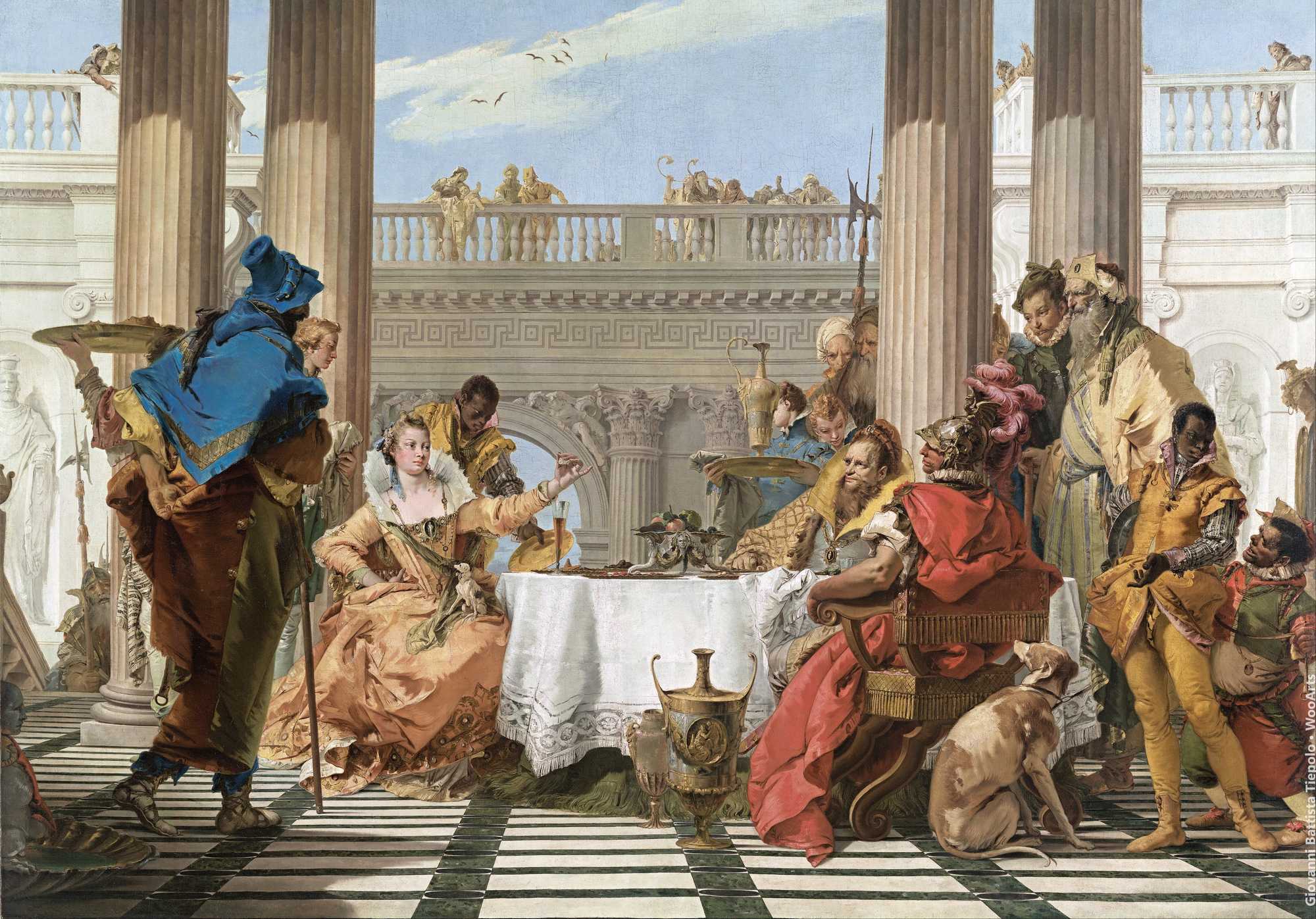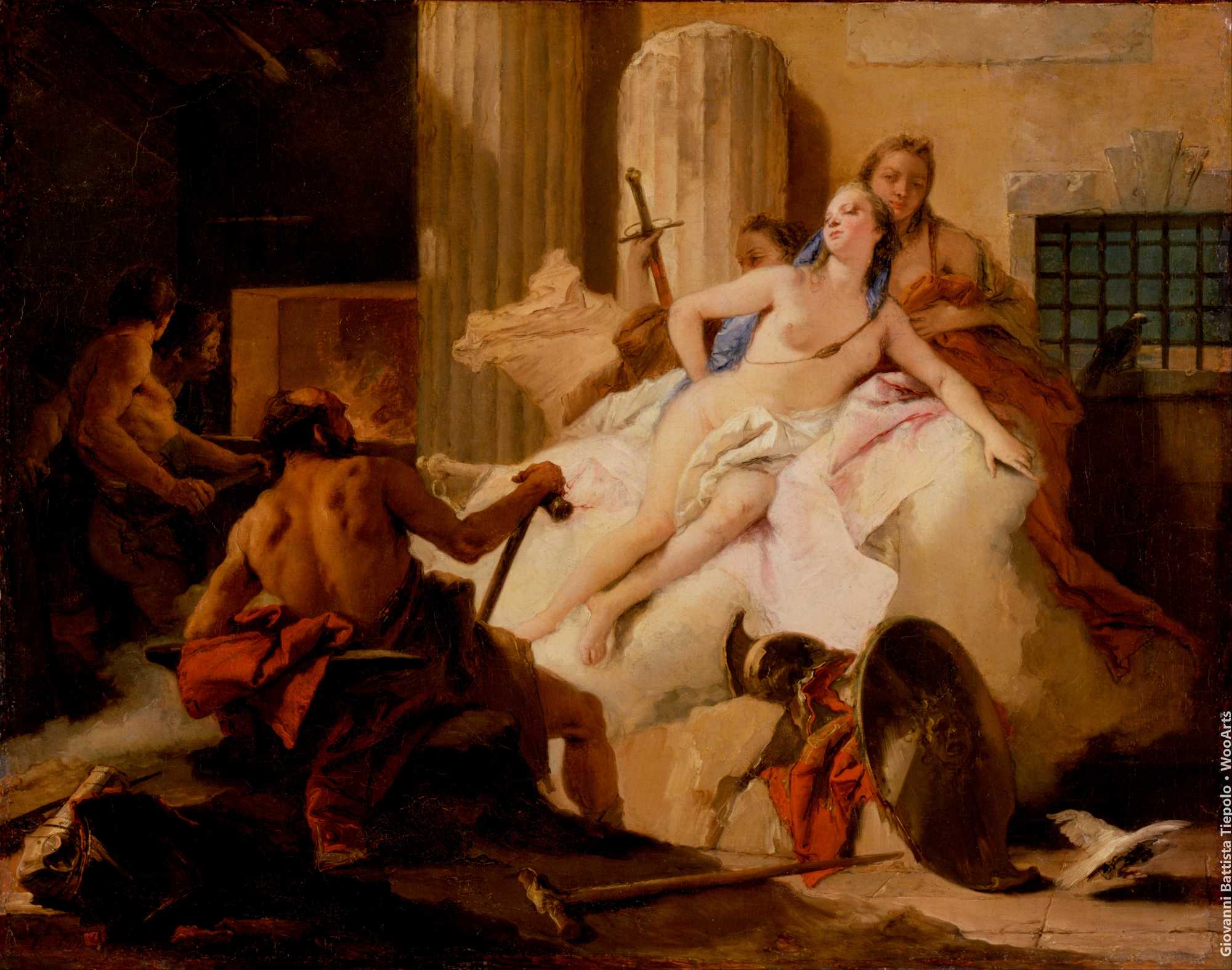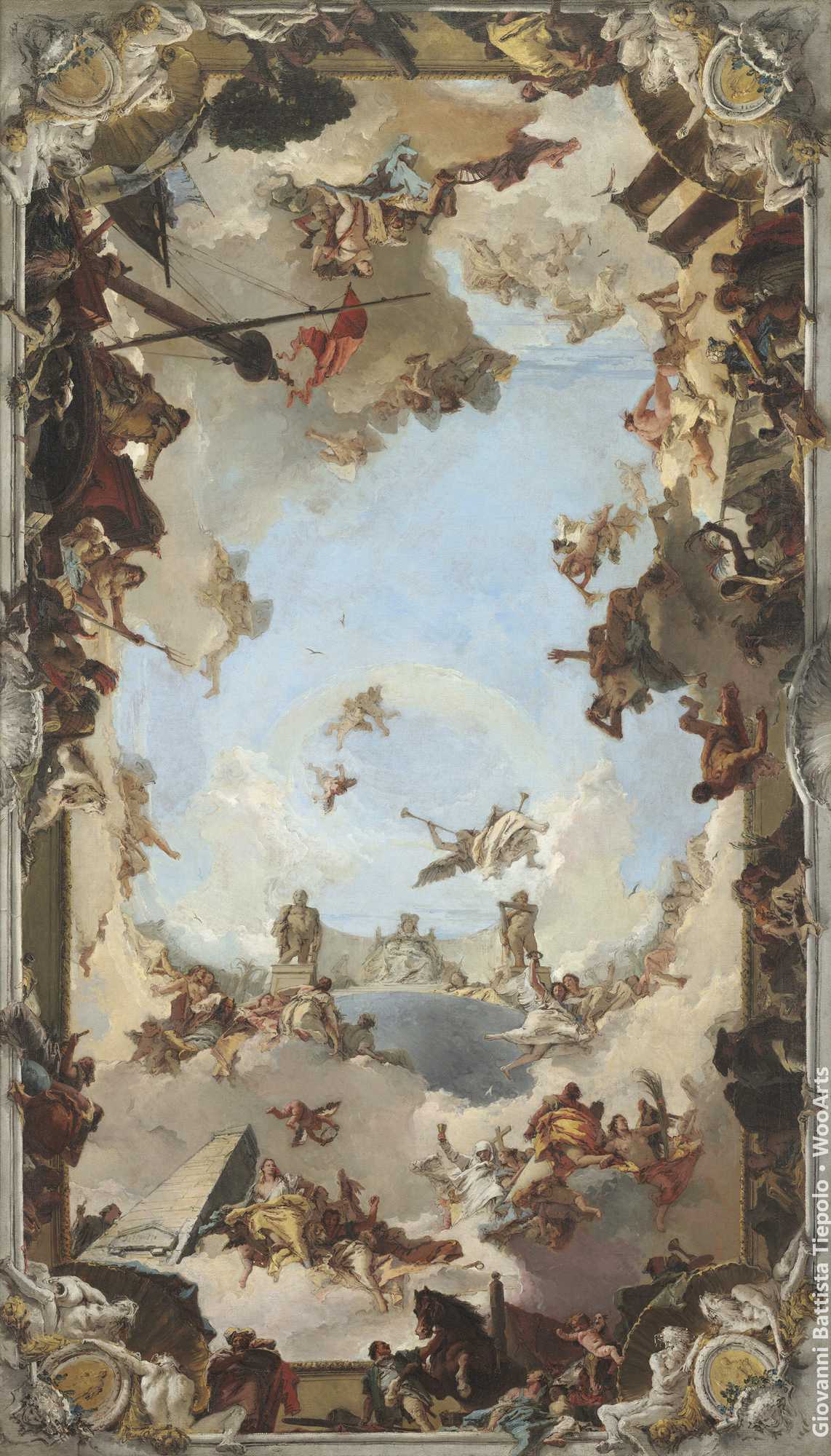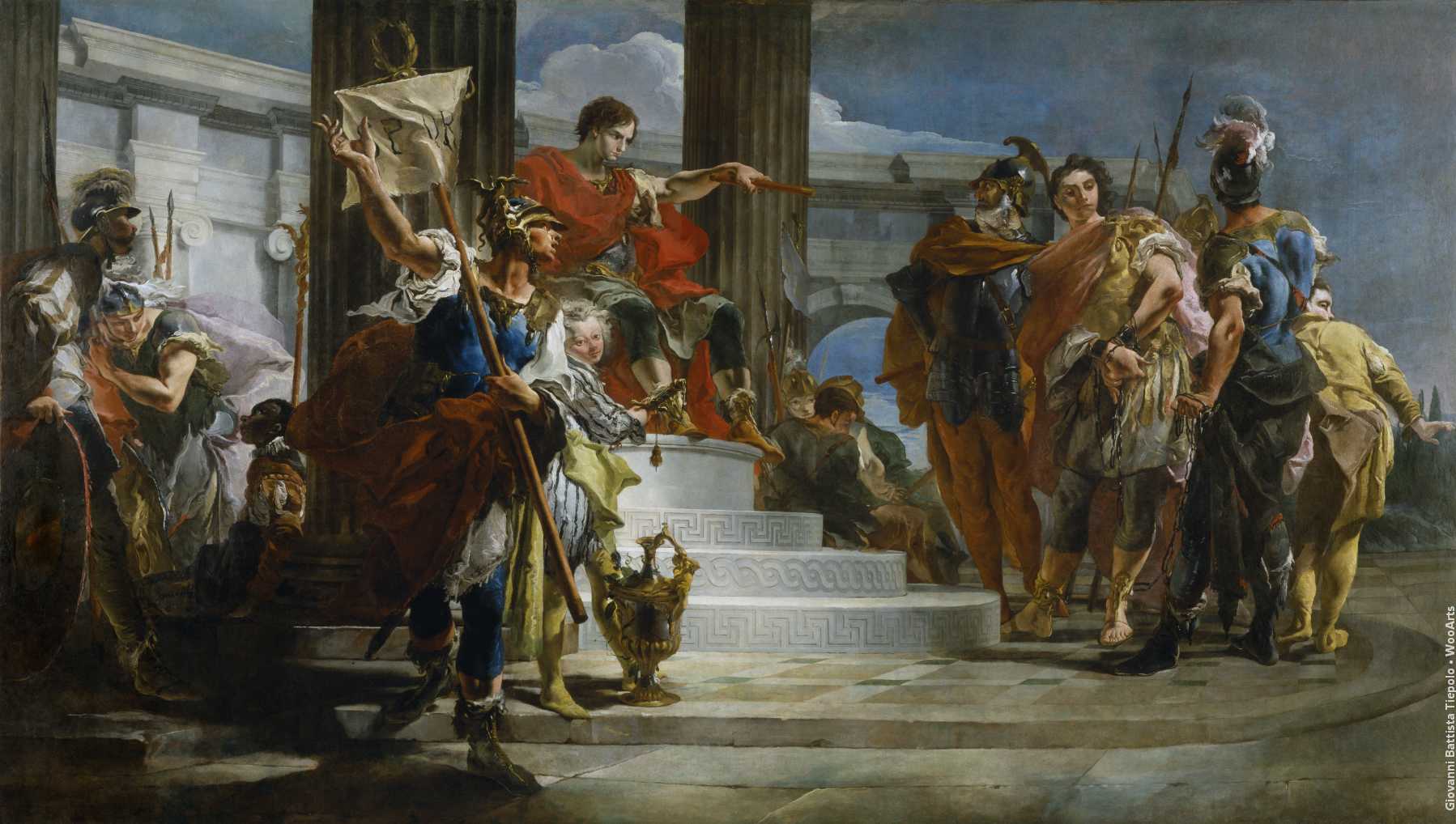Giovanni Battista Tiepolo, born on March 5, 1696, in Venice, Italy, was a highly influential Italian painter and printmaker of the 18th century.
Giovanni Battista Tiepolo Painting
Tiepolo’s artistic journey began in his native Venice, where he received training in the workshop of Gregorio Lazzarini, a well-known religious painter. Tiepolo’s early works reflected the influence of Venetian Renaissance masters like Titian and Veronese, displaying a rich color palette and a skilled use of chiaroscuro. However, it was his encounter with the works of Venetian master Giovanni Battista Piazzetta that sparked Tiepolo’s interest in the Baroque style.
In the 1720s, Tiepolo’s career flourished as he received prestigious commissions throughout northern Italy. He was celebrated for his ability to infuse his compositions with dynamism and vitality. His mastery of fresco painting became particularly renowned, and Tiepolo was sought after to decorate the palaces and churches of noble patrons. His frescoes adorned the ceilings and walls of grand buildings in Venice, Udine, Würzburg, Madrid, and other European cities, showcasing his exceptional skill in depicting illusionistic scenes filled with figures, mythological beings, and architectural elements.
Tiepolo’s style evolved over time, incorporating elements of classicism and a more delicate and graceful approach. His figures became more ethereal, and his compositions grew lighter and airier. Tiepolo’s works were characterized by the use of vibrant colors, the play of light and shadow, and a sense of movement and drama. His paintings often depicted celestial scenes, such as heavenly realms or allegorical representations of the seasons and virtues.
One of Tiepolo’s most renowned works is the fresco series in the Würzburg Residence, a masterpiece of Baroque art. Created between 1751 and 1753, the frescoes cover the ceilings and walls of the palace’s grand staircase and showcase Tiepolo’s incredible talent for grand-scale decoration. The series, titled “The Four Continents,” depicts personifications of Europe, America, Asia, and Africa in stunning detail, surrounded by mythological figures and exotic landscapes.
Tiepolo’s legacy extends beyond his frescoes, as he also left a remarkable body of work in oil paintings, drawings, and etchings. His oil paintings often captured intimate moments, with portraits revealing a deep understanding of human psychology. In his drawings and etchings, Tiepolo displayed a free and spontaneous style, showcasing his remarkable ability to capture movement and gesture.
Giovanni Battista Tiepolo’s influence on the art world cannot be overstated. His grandiose compositions, technical brilliance, and imaginative storytelling laid the groundwork for the later development of Neoclassicism and Romanticism. Artists such as Francisco Goya and Eugène Delacroix admired and were inspired by Tiepolo’s work. Today, his paintings are treasured in museums and collections around the world, testifying to the enduring impact of this extraordinary artist.













